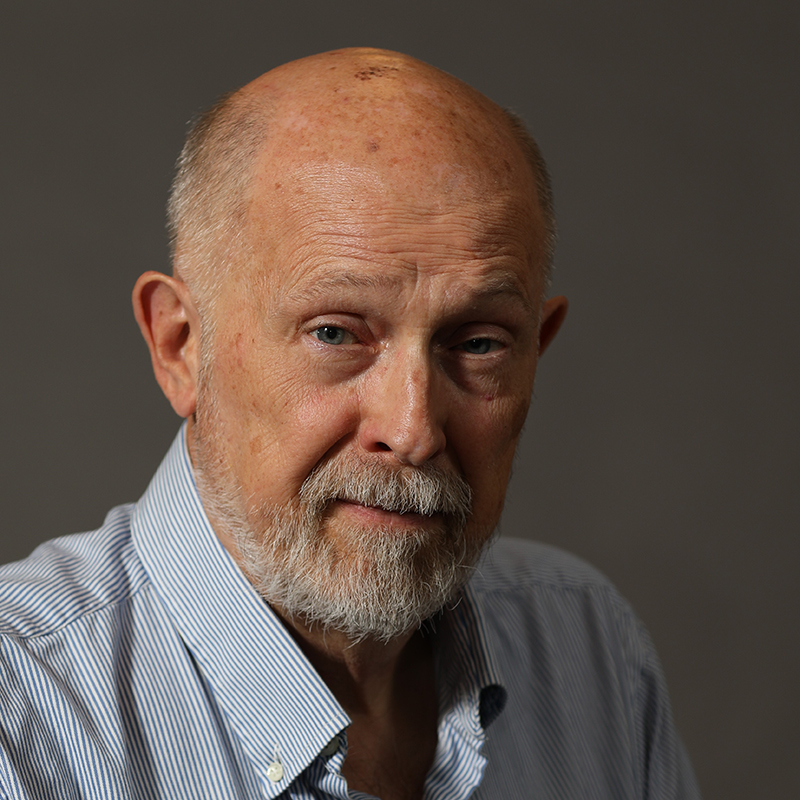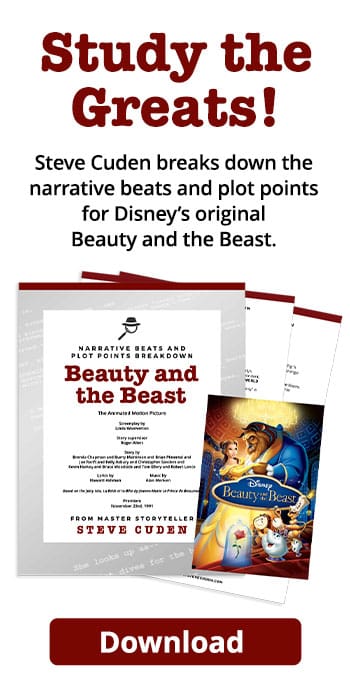“After the show, one of the women came up to me and she said, I don’t know if you remember, last year my father fell off a bench during your show. And I actually did remember. I thought, was he all right. She says…he was fine. He fell off the bench from laughing. And she says, however, he did end up passing away this year, but every day for the last six months of his life, he chuckled about your show. And so we decided in his honor to come as a family to the show.”
~Al Olson
Al Olson is one of a select handful of eccentric, quirky, and entertaining people who helped grow American Renaissance Festivals into being a very popular ticket. He shares his story in his comprehensive book, A History of the American Renaissance Festival.
While attending the University of Minnesota, working nights in a parking ramp and pumping iron at Dove’s Bicep Gym, Al also performed his original songs in the same coffee houses on the west bank of the Mississippi that Bob Dylan had played just a few years earlier. The artistic director of the Minnesota Renaissance Festival attended a theatrical presentation of Al’s original works at Theatre in the Round and hired him on the spot.
Al began performing at Renaissance Faires as a member of the group, “Pumpkin,” writing original Renaissance music. After less than a season, he noted the greater crowd impact of performers like Penn and Teller, Avner the Eccentric, the Flying Karamazov Brothers, and Puke and Snot. As a result, Smee and Blogg were formed out of frustration and a desire to present something unique. The tandem comedic vaudeville act performed for 36 years, singing and dancing across the U.S. and Canada at 56 renaissance festivals and medieval faires. After the act stopped performing in 2013, Al carried on as the Singing Executioner at renaissance and medieval faires in Texas and Oklahoma to this day.
For six years, he was the co-founder and general manager of the Tennessee Renaissance Festival. Over the past two decades Al has performed voice-overs for radio commercials for various festivals. And for the past decade he’s served as the master of properties for Texas Ballet Theatre.
WEBSITES:
AL OLSON’S BOOK:
IF YOU LIKE THIS EPISODE, YOU MAY ALSO ENJOY:
- Ron Destro, Writer-Actor-Director-Teacher-Episode #270
- Skip Lackey, Actor-Writer-Director-Producer-Episode #265
- Peter Smith and Laura Smith, Authors and Teachers-Episode #244
- Mike Byrne, Creator of The Beatles Story Exhibition-Episode #239
- Tim Quinn, Writer-Editor-Artist-Manager-Episode #231
- Dobie Maxwell, Stand-Up Comedian, Episode #212
Steve Cuden: On today’s StoryBeat:
Al Olson: about 20 people in a group walked up to our show. When I was getting ready to start the show, and I asked, I said, is this a family reunion? And nobody responded. we did the show. After the show, one of the women came up to me and she said, I don’t know if you remember, last year my father fell off a bench during your show. And I actually did remember. Yes, I did. I thought he was all right. She says, oh, no, no, no, he was fine. He fell off the bench from laughing. And she says, however, he did end up passing away this year, but every day for the last six months of his life, he chuckled about your show. And so we decided in his honor to come as a family to the show.
Announcer: This is StoryBeat with Steve Cuden, a podcast for the creative mind. StoryBeat explores how masters of creativity develop and produce brilliant works that people everywhere love and admire. So join us as we discover how talented creators find success in the worlds of imagination and entertainment. Here now is your host, Steve Cuden.
Steve Cuden: Thanks for joining us on StoryBeat. We’re coming to you from the Steel City, Pittsburgh, Pennsylvania. My guest today, Al Olson, is one of a select handful of eccentric, quirky, and entertaining people who helped grow American Renaissance festivals into being a very popular ticket. He shares his story in his comprehensive book a ah, History of the American Renaissance Festival while attending the University of Minnesota, working nights in a parking ramp and pumping iron at Doves Bicep Gym, Al also performed his original songs in the same coffeehouses on the west bank of the Mississippi that Bob Dylan had played just a few years earlier. The artistic director of the Minnesota Renaissance Festival attended a theatrical presentation of Al’s original works at theater in the round and hired him on the spot. Al began performing at Renaissance fairs as a member of the group Pumpkin, writing original Renaissance music after less than a season. He noted the greater crowd impact of performers like Penn and Teller, Abner the Eccentric, the Flying Karamazov brothers, and Puke and Snott. As a result, Smee and blogg were formed out of frustration and a desire to present something unique. The tandem comedic vaudeville act performed for 36 years, singing and dancing across the US and Canada at 56 Renaissance festivals and medieval fairs. After the act stopped performing in 2013, Al carried on as the singing executioner at Renaissance and medieval fairs in Texas and Oklahoma to this day. For six years, he was the co founder and general manager of the Tennessee Renaissance Festival. Over the past two decades, Al has performed voiceovers for radio commercials for various festivals. And for the past decade, he’s served as the master of properties for tech, Texas Ballet Theater. So for all those reasons and many more, I’m truly delighted to welcome the author and noted Renaissance festival entertainer, Al Olson, to StoryBeat today. Al, welcome to the show.
Al Olson: Thank you very much, Steve, it’s a.
Steve Cuden: Great pleasure to have you here. So let’s go back in time just a little bit. At what point in your life, at what age were you when your interest in performance began?
Al Olson: Well, my father actually built a, stage in our basement when I was about six. My mother directed the neighborhood kids in a play.
Steve Cuden: Okay.
Al Olson: I sang solos in church, starting at about the age of ten. And it just continued all through high school and beyond.
Steve Cuden: So you were, it was a baptism by fire. You were dropped in it as a little boy.
Al Olson: Yes.
Steve Cuden: And do you think that anything that you learned way back in the beginning is still with you to this day?
Al Olson: Oh, yes. during my junior year of physics courses at the University of Minnesota, I was cast at the Guthrie Theater in Minneapolis, which is a well known theater.
Steve Cuden: Very well known.
Al Olson: And, I would say just, being there for 53 performances of Beckett, with the incredible talents around me, taught me more than anything else did.
Steve Cuden: So you were really in the middle of a great cultural place, especially with the guthrie there.
Al Olson: Yes. as I say in the book, there was something called the 5% club. All the major corporations in the, area, donated 5% of their income to a fund for the arts and other things, but greatly for the arts. And so, there were just a lot of theaters, a lot of puppetry groups, dance, groups. There was a lot. And that certainly helped the Minnesota show explode at the beginning as well.
Steve Cuden: So when did you then start to think about writing songs and becoming a musician in that way?
Al Olson: That was in high school. my partner John and I, proved our math teacher wrong on a test question. And, that’s when we started talking. I, went over to his place. He said he had a gym in the basement. He was already lifting weights at the time. And went over, and then he picked up a guitar, and we started, harmonizing right away.
Steve Cuden: Well, something is off there, Al, because as a person in the entertainment business, how could you possibly know about math?
Al Olson: Yeah, you know, it, actually, music, is very mathematical.
Steve Cuden: Yes, it is. Yes, it is. And of course, I’m kidding. I’m pulling your leg. But most of the people that I know, including myself, are not math oriented in the entertainment business. But you’re right. Musicians are.
Al Olson: Yeah.
Steve Cuden: Your book, the history of the American Renaissance festival, it’s really quite a fascinating book. I found it to be so and very unusual because most books of that kind are written out as sort of almost a narrative of what has happened at the festivals. You wrote it largely as a narrative of the people at the festivals, and there are huge numbers of people in it. What exactly inspired you to write a book about the people in the festivals, more than the festivals themselves?
Al Olson: Well, originally I set out, to tell the history. but then, my friend Mike Barich, who passed this year, he was actually a rock photographer for two of the, major Renaissance festival producers who did rock shows before they got into the renaissance business. And so I took him around in the mid nineties to take photos at festivals of people. And once I realized I had these world class photos of people, I had to put a bio to the pictures because otherwise it would have been silly.
Steve Cuden: Well, that’s a great reason to have a book, because you’ve got all this information. Did you own the pictures, or did you have to deal with rights?
Al Olson: Oh, no, they, No, Mike, he always did our photography for us, for the act. And, no, he, As a matter of fact, in the acknowledgments, I say I never paid you what you were worth. I’m sorry about that.
Steve Cuden: And you also, I’m asking for practical reasons. You also didn’t need to get rights from the people whose pictures you were then putting into the book, either. Correct? Like the rights to their image.
Al Olson: They knew they were posing for pictures for the book.
Steve Cuden: Oh, I see. So. Oh, I see. So it was intentional for the book.
Al Olson: Yes.
Steve Cuden: Got it. Because some of the pictures go way back when. They’re not that.
Al Olson: Oh, yeah. I mean, I did pick up some historical photos, and I pulled a few from, there’s, some websites that sell old newspaper photos, and I pulled a number of. A few shots off of those as well.
Steve Cuden: All right, so let’s talk about where your world of the renaissance fair started. Did you spend time in Minnesota going to the original renaissance festivals?
Al Olson: No. as a matter of fact, when we were hired to perform, we had no idea what it was. Jeff Siegel was the artistic director of the show that came to a stage show that we were part of, and, hired us on the spot, and it took us until we were out there to find out exactly what it was.
Steve Cuden: What did you think you were going to do?
Al Olson: well, we knew that it was supposed to be something that was 16th century and historical, that, you know, we wrote what we thought would be original renaissance, songs.
Steve Cuden: I see. Had you done anything renaissance like? I don’t think Beckett is renaissance. Is it?
Al Olson: It’s roughly, roughly that era. But, that had nothing to do with it.
Steve Cuden: No, it, but you’re not shakespearean trained. You’re not medieval trained. You’re none of that from your background?
Al Olson: No, no, we’re, trained in comedy.
Steve Cuden: So then what was your first take on when you went to a fair? What did you think?
Al Olson: Well, we were right at home, because, again, in the book, I mentioned the fact Jeff Siegel, the artistic director for the Minnesota show, I was standing next to him when a reporter asked him what years the Minnesota Renaissance festival covered, and his reply was, anything from King Arthur to vaudeville, m.
Steve Cuden: And you felt like that was right in your pocket.
Al Olson: That was what we were doing, and that’s what Penn and Taylor were doing.
Steve Cuden: So you were there. Was this the first festival, or how many had been on before you got involved?
Al Olson: Well, the pleasure fair started it all out in California, but George, Coulomb, who started the Minnesota show, actually started first in Salt Lake City, didn’t work very well there, but when it came to Minneapolis, it just exploded.
Steve Cuden: when you got involved in the Renaissance fairs, this was long before you became SME and blog, correct?
Al Olson: It was a year.
Steve Cuden: One year.
Al Olson: We actually, at the end of our first year, all it took was that one year seeing these other groups to realize that we wanted something else.
Steve Cuden: And did you know when you started to do SME and blog that this would then become a very long term proposition?
Al Olson: Never dreamed it, no. It was just a lot of fun and, enjoying the fact that we were working with other people that were really talented and good on, off the cuff comedians.
Steve Cuden: So those of us, because, including me, I’ve never, never been to a Renaissance festival. I hate to admit it, but I never have explain to those who are uninitiated what a renaissance fair or festival, whatever you want to call it, what is it, what is it involved, basically.
Al Olson: For the visitor, they are entering a 16th century village that is immersed in celebration. and there are characters wandering around who are there to interact with the crowd. There are stage shows which are also interactive. there are crafts and arts lining the walls of the place, along with demonstrations, a ah, lot of food and drink, and, just a full day of, entertainment.
Steve Cuden: And the entertainment, is it out among the public or is it on stages?
Al Olson: Both both. There’s, a combination of the street talent and stage talent.
Steve Cuden: And you, as SME and blog, were you among the public?
Al Olson: Oh, yes. Oh, yes. I designed my character as a six foot four inch, executioner with a black bag on my head and a seven foot x as a children’s character.
Steve Cuden: That’s a children’s character.
Al Olson: Yes. And so. And the kids get it. The kids, they can get it. The parents don’t always get it, but, no. I can stop and talk to a three year old kid for about five minutes and draw a crowd.
Steve Cuden: That’s amazing. And they’re not afraid of you?
Al Olson: No.
Steve Cuden: And is it all because of your attitude and the comedy that comes out of you?
Al Olson: Actually, it is kind of a strange, energetic thing, because, as a matter of fact, I’ve focused on that for over 40 years. And so I will find myself in a restaurant somewhere, and some little kid will just start coming up to me and talking to me, and the mother will be, He never does this. I’m sorry. And it’s like, it’s all right. I understand.
Steve Cuden: So you’re basically the pied piper of.
Al Olson: Hamlin in an odd sort of way.
Steve Cuden: And you played Smee. Of Smee and blog, correct?
Al Olson: Yes.
Steve Cuden: And so who played blog?
Al Olson: John Doring.
Steve Cuden: How long did you do this? 36 years. Together?
Al Olson: we started performing together in 1965 as fester and carbuncle, and, continued until 2012 or 2013 as SME and blog.
Steve Cuden: I see. All right. And you were an executioner? Was blog also an executioner?
Al Olson: Yeah. SME and blog. The singing executioner.
Steve Cuden: And explain what the act really was then. If you were attractive to kids as an executioner with this big seven foot tall axe, what was the attraction? What did you do?
Al Olson: Song, dance, and jokes. And we always had a kiddies hour in every show. If you’re happy and you know it, pick your nose if you’re happy and you know it, pick your nose throw your food across the room hit your brother with a broom if you’re happy and you know it, pick your nose. If you don’t get what you want, throw a fit if you don’t get what you want, throw a fit. Scream and howl rant and rave till your parents finally cave. If you don’t go out, you won’t throw a fit, et cetera, et cetera.
Steve Cuden: Well, thank you very much. I didn’t know I was going to get a performance tonight. That’s great. So when you were putting the act together, how did you decide? What was the decision making process? Of, we’re going to do this, we’re going to develop that. We’re not going to do this or that. How did you do that?
Al Olson: Most of the material came out of song, parodies. And then, you just kind of connect the song parodies with, an introduction and jokes, or we made up silly commercials and that sort of thing, and, just strung, it all together.
Steve Cuden: And did you find that it was relatively easy to create material or was it a struggle?
Al Olson: My partner John, was incredibly talented. He’s written over 70 parodies of songs.
Steve Cuden: Wow.
Al Olson: And anywhere from, you know, It’s a dumb song after all. It’s a dumb song after all. It’s the one about torture and what we have to use to torture somebody.
Steve Cuden: And you’re saying that the adults didn’t get this, but the kids did?
Al Olson: Well, no, the adults, no, the adults love the show. But when I’m in the lanes, a lot of the time, kids can see my eyes, they can zone in on me, and they understand that I’m fine. Even though their parents might be behind. Run away, run away or, you know, whatever.
Steve Cuden: I might run away if I saw a six foot four tall guy with a black hood over his head and an axe. And so I’m just curious, did the act continue to evolve over the years, or did it stay mostly the same?
Al Olson: No, we actually, it was contractual with, Dick, Shapiro and the King Richard’s fairs that we change at least 30% of our act every year.
Steve Cuden: Oh, is that right? 30%, yeah.
Al Olson: And so we did, oddly enough, in the Renaissance festival world, that probably hurt us because, most acts don’t change like that, and their fans just keep coming back, and their fans want to bring friends who they can show that they know the show and that sort of thing.
Steve Cuden: Did it disappoint people in the audience who wanted to see x, y or z?
Al Olson: well, at times it did. I mean, we finish a show and they’re like, well, you don’t do this one anymore. You don’t do this one anymore.
Steve Cuden: What would you say were the biggest hurdles in performing on a regular basis like that? What was the thing or things that made your life, wow, we’ve got to get through this more often than not.
Al Olson: I’d say weather for the most part. I mean, weather, it’s a rain or shine business. it was, in Minnesota, it was, something like, 35 degrees and not hailing, raining.
Steve Cuden: and you’re shirtless doing the shirtless.
Al Olson: And, that sort of thing. As well as in Arizona, it gets really hot and you just have to keep going. In that business, that is the toughest thing is dealing with the weather.
Steve Cuden: All right, so I’m curious, what’s the biggest screw up that you ever experienced and how did you get out of it?
Al Olson: Wow. Yeah, it wasn’t really a screw up. I came up with a new idea for a joke, and, we bring somebody up on the stage to get his head chopped off, and then he gets out of it, and then he gets the opportunity to do something funny and he fails. And so the thing I say was, well, Joe, it’s guys like you that give William Shatner the courage to return to the stage. And the crowd hated me, they hated me. They’re all star Trek fans.
Steve Cuden: Well, I hate to tell you, but I’ve actually interviewed Mister Shatner live, and so he has a lot of really great fans that really are very beholden to him.
Al Olson: Yeah, no, it, took me two weeks to figure out how to deliver the line, and basically I had to apologize for saying it. Joe, it’s guys like you to give William Shatner the courage to return to the stage, and then it’s funny.
Steve Cuden: It’s all in the delivery, isn’t it?
Al Olson: Oh, it is.
Steve Cuden: And that’s true for most comedy, isn’t it?
Al Olson: Oh, yeah, yeah.
Steve Cuden: Because if you don’t deliver the line right, people don’t know why it’s funny.
Al Olson: Right.
Steve Cuden: Working all those fairs, I have to assume that there were more than a few pressures on you over time, for one thing or another, whether it’s deadline pressures or performance pressures or whatever they are. Do you have a method or a technique for handling pressure when you’re under it?
Al Olson: There’s a great deal of freedom in working these shows, and so you don’t really run into pressure like that very often.
Steve Cuden: Did you find performance easy? Is that it?
Al Olson: Just, oh, I love it. Yeah. I mean, you know, there are, I know people talk about stage fright, but I don’t understand that you’ve never had it.
Steve Cuden: No, you just go out and do your thing.
Al Olson: Let me on the stage.
Steve Cuden: What is it that you think has made the festivals so very popular over time?
Al Olson: Well, I honestly think that a lot of people are not that satisfied with their lives.
Steve Cuden: Oh, interesting.
Al Olson: And when they go to a renaissance festival, it’s all about them. It’s all about them having fun. They’re getting away from the real world. And I really think that, that is the big attraction that, it’s, I mean, there’s you have a wonderful time. You eat, drink and be merry. But people really do talk about loving to come out and forgetting about the real world.
Steve Cuden: Escape from reality.
Al Olson: Yes.
Steve Cuden: It’s like, well, I guess similarly to major theme parks like Disney, the various Disney parks. People, once they go through the gate and enter that world, they feel like they’ve left their normal life behind.
Al Olson: Yes.
Steve Cuden: And what is it that you think is so fascinating to people about the days of King Arthur and medieval times?
Al Olson: Well, there are, I mean, you’ve got people that are into castles. You got people that are into horses. You’ve got people that are into armor. You’ve got people that are into weapons. And. And certainly you got people that are into art and. And just having a good time. So, I mean, it’s goes across the.
Steve Cuden: Board, but it’s specific to an era. You could say that about the 18 hundreds as well in the old west. But this is specific to King Arthur and to the medieval times and to jousting and to, like you say, castles. And do you think that people yearn for that or they just like to revisit something from history?
Al Olson: Well, I think that they just. They can relate to the. The theme very easily because of movies and that sort of thing. and there is a rather odd phenomenon. jousters, the knights on horseback, have. Have legions of women chasing them all the time.
Steve Cuden: Really?
Al Olson: The knight in shining armor effect is pretty humorous.
Steve Cuden: Can they see the knight without the shining armor, or are they just looking at the guy in armor?
Al Olson: Well, they’re just attracted to them and hang around them and, would love to go out to dinner with them and whatever.
Steve Cuden: I didn’t realize jousting was so popular among women.
Al Olson: Oh, yeah. Oh, that’s, most festival posters will have, a picture of their joust.
Steve Cuden: Very interesting. So you also have produced festivals like the one in Tennessee, right?
Al Olson: Yes.
Steve Cuden: Okay, so let’s talk about what goes into successfully pulling off an event like this.
Al Olson: Well, you’ve got to be, within about an hour of a major population source. First of all, you’ve, got to have enough acreage to have yourself a site, maybe 70 to 200 acres. And you’ve got to have enough acreage for parking. so that’s. That’s the basic start. Then you, of course, depending on the locality. I was very lucky in Nashville. As far as licenses, the sheriff just said you’re not a rock concert. No, we’re not a rock concert. Okay. As long as you’re not a rock concert. That’s fine. And, the food requirements, were simply, having a refrigerator, having refrigeration and a place to wash hands. I mean, it’s a lot more stringent in a lot of other places, but in Nashville there, that was easy. I found a soda sponsor. we couldn’t sell beer ourselves, so I had to find a, local group to sell beer as a fundraiser for them. Found a Kiwanis club that covered that. You, then, of course, have to somehow build, a site.
Steve Cuden: And what’s entailed in that, that must take a lot of planning.
Al Olson: Oh, yeah. Oh, yeah. It, you know, a front gate is important to set the mood for people. So you want a nice, nice front gate.
Steve Cuden: Does it then require big, tall walls so you can’t see in?
Al Olson: Yeah, big, tall walls. Usually it’s good if you can have a second deck so that people at the opening gate can, react with the crowd from above and get them all into the mood, that sort of a thing. you’ve got food booths. the. The crafters are responsible for their own.
Steve Cuden: Booths, so including the building of them?
Al Olson: Yes, yes. They, they own their buildings even though they don’t own the land the buildings are on. But, tent show, you know, they just rent tents and bring those in. but a permanent site, they are responsible for building and maintaining their booths. Then, of course, you get around to promotional, other promotional aspects, which, a lot of times involves taking some of your cast to public events, and then trying to get sponsors to help you with your radio and tv advertising and, then, hiring your casts and your workers.
Steve Cuden: How do you decide what entertainment is going to be, you know, on display or performed? How do you make those decisions?
Al Olson: Well, usually that’s a bottom line thing. You have a. You set a budget for your entertainment, you know how many spots you have to fill. And so whoever you can get to work within those, limitations is who you end up with. I mean, there are literally hundreds and hundreds of acts nowadays, because there are as many as. As 15 festivals at a time happening at the same time right now.
Steve Cuden: Oh, is that right? I didn’t realize it was that much at one time.
Al Olson: Oh, yeah. Oh, the summer, it’s just they’re everywhere.
Steve Cuden: They’re everywhere. And so people have, over time, become known as performers that work those festivals.
Al Olson: Yes, yes.
Steve Cuden: Just like you did.
Al Olson: And from the early days, there was a newspaper published by the participants that, would keep track of all the new festivals. The old festivals have all the all the information for the craft coordinator, the entertainment director, that sort of thing. And so, we were well, well equipped to, approach different shows. And that’s what, as an entertainer, you have to approach the shows yourself.
Steve Cuden: When you were producing the one in Tennessee, were you also performing in it?
Al Olson: Yes. That was, your earlier question about pressure. I would say that’s probably the most pressure I’ve run into, was. Was going from running a show to running down and doing my show and then getting back to all the things that are going on.
Steve Cuden: Well, it’s got to be a very, very hectic and busy period when you’re running the place.
Al Olson: Oh, yeah. Oh, yeah. Because we had one day, we opened the gate, and some guy comes running in, yelling, spiders, spiders. And he runs right into a tree and knocks himself out. That’s how the day started.
Steve Cuden: Wow.
Al Olson: Obviously doing some drugs. But, it’s kind of hard to get back into the festive mood after that’s what the opening gate folks see.
Steve Cuden: I have to imagine running a festival like that is, a lot of it is putting out fires of one kind or another.
Al Olson: Oh, yes. Oh, yes. You’ve got. People take umbrage at some things. People show up, they don’t really have a sense of humor. And you need a sense of humor to enjoy a renaissance festival. And so you’ll get complaints and depending on the show. John Mills was a producer for King Richard’s fairs, and he always, entertained us in our morning meetings with. With complaint letters that we all laughed at.
Steve Cuden: Is it because people were just. They thought they were being ripped off or they weren’t getting what they wanted or what was it?
Al Olson: Yeah, they, you know, they didn’t like it. Most of the time, it’s like, they. They don’t like what people are doing, you know?
Steve Cuden: I mean, I have to also imagine that if you’re one of the performers, like you were, that was interacting with the public, not on a stage, but actually out in the public, that there had to have been moments where people did or said things to you that were a little weird, untoward, or offbeat. Yeah.
Al Olson: Yes. I, back in 82 at the Scarborough fair, I, was approached after a show by a very, very well put together woman. You know, she looked like she had money. She walked up to me and surprised me by asking me if I, had ever considered posing for nude photos. And I said, what are you talking about? And she said, well, I have a friend. He’s gay, he’s very rich, but he would pay you well, to pose for photos. And I said, not really interested. I’ve got a question for you. Would you pose nude for photos? She almost swallowed her tongue in shock that I would ask her that. And then she says, no, but I do party.
Steve Cuden: I have to imagine that people also get a little drunk at these things.
Al Olson: Oh, yeah. Oh. Oh, yeah. We, At the Texas Renaissance festival, this was our first year there, and so we were actually doing shows in the lanes. And there were. There were these. This group of seven or eight guys from East Texas. Every one of them was at least six, 6250. They were huge. And they wanted my axe through the day. They, you know, they come at it, and I’d have to go backstage or whatever. And we were doing a show in the lanes, and all of a sudden we’re in the middle of a show, trying to make people laugh, and. And one of these guys just lurches in. I mean, he’s really drunk at this point, and I know that he’s coming for the axe. And my buddy Jimmy Lee Dennard, who runs the elephants, a guy six five, just skinny as a rail, just ran right up to him and grabbed him and waltzed him right back out of the circle.
Steve Cuden: Am I correct? The Texas festival is known as the Disneyland of Renaissance festival. Is that right?
Al Olson: It is. It is the biggest. It’s the only show that has its own waste disposal site.
Steve Cuden: Wow.
Al Olson: That’s George Coulomb’s ultimate festival. He’s the one that took the idea from California to Salt Lake City to Minnesota. He sold Minnesota to four gentlemen who split the country in half and started a bunch of others. But then he went down to Houston and. And just created this incredible, incredible festival.
Steve Cuden: And how big is it? I mean, when you say it’s the biggest, how big?
Al Olson: Well, 350 acres of site, 400 acres of parking. They actually had 60, thousand people there, one day a few years ago.
Steve Cuden: My goodness. Well, Disneyland, the original Disneyland, is, I believe, only 80 acres.
Al Olson: Yeah. Oh, no, this is much bigger. It’s. It’s, He’s got different areas. The Robin Hood area. He had, there’s a walkthrough area. No, it’s huge. As of about 1015 years ago, it was the only show that I saw the, guards at the front gate with automatic weapons.
Steve Cuden: Wow. really?
Al Olson: Yes.
Steve Cuden: They weren’t medieval.
Al Olson: No, no. These are the guards covering the, ticket booths. Where the money is.
Steve Cuden: Where the money is. And I imagine that festivals being very popular are attractive to, people who want to get that money, somehow that could happen to you.
Al Olson: Oh, yeah. Oh, yeah, there’s, there’s a lot of theft because, you know, there’s a lot of trust by the people that put out their wares at festivals, and, and it gets busy, and so you can’t keep an eye on everybody in your shop. And, and there is, there is a lot of theft at times.
Steve Cuden: Most of the shops are crafts. Yes, yes. what other, besides from food and crafts, what other kind of shops would you find?
Al Olson: Well, jewelry is really popular, clothes are really popular, glass, glassblowers.
Steve Cuden: do people sell medieval weapons or that kind of stuff?
Al Olson: Oh, yes. Oh, yes. Yeah. Every show had several weapons makers, very interesting furniture, art. So.
Steve Cuden: So it’s like a giant arts festival.
Al Olson: Yes.
Steve Cuden: Only with a medieval theme.
Al Olson: Yeah. And chain mail is, of course, very popular.
Steve Cuden: And chain mail is popular. So let’s talk about the book itself and the creation of the book. The book is visually beautiful. It’s a, it’s so rich in pictures and imagery, and, the way that you present it is also easy to understand and read that I thought it was a very well done book. Do you consider yourself to be a historian of the festivals?
Al Olson: I guess I’m still stuck in that role now. I just had to do this back, back in the late eighties when I started the idea for the book. At that point, the only place Renaissance festivals showed up in the media were as a sitcom joke. And, while I understand that approach, I, at that point, had been in the business for ten years, and I knew that, the people involved were very talented, they had many other choices in life, and, I just had to, tell the story. I don’t know, it was something I had to do.
Steve Cuden: You were compelled to do it?
Al Olson: Yes.
Steve Cuden: As many people that write or perform are, you’re a performer. You’ve been compelled to be a performer your whole life, right?
Al Olson: Yes.
Steve Cuden: Well, so that’s just in your nature to say, hey, I feel like I need to do something. Let’s do it. I think that’s important for the listeners to understand that when someone is compelled, as you are, to do that sort of thing, as I have been in my life, it’s really hard not to do it.
Al Olson: Yes. Yeah. No, you’ve got to do it.
Steve Cuden: You’ve got to do it. So there’s a ton of festival poster art in the book, especially in the last part of the book. What kind of imagery or wording was often used to draw attendees to the festivals?
Al Olson: Huzzah. The exclamation of delight. I used experience the fantasy in my first Tennessee poster, which has been used quite a bit. basically they use photos of people eating, jousting fire eaters, that sort of thing, just to create this exciting effect.
Steve Cuden: Well, I am curious. There were numerous acts called out in the book. I meant dozens of acts, including James the pickle. Well, these are not acts necessarily, but James the pickle man, Pickett, the insulter. Hilton the Nubian, is it? Hilton the Nubian Jackson. Is that right?
Al Olson: Yes, yes. He passed away last year as well.
Steve Cuden: So, where did some of these acts, where did the names and the acts come from? Did they come from history itself or were they completely made up?
Al Olson: No, they’re totally made up. That was the beauty of this industry, was that it was a blank slate. And those of us who started in the early days, it was just like, come up with something. You can invent yourself entirely.
Steve Cuden: And is there a certain type of person that works festivals?
Al Olson: Is it.
Steve Cuden: There’s a. Can you tell, is there a sort of a thread running through the type of human that decides they want to do that kind of work?
Al Olson: Well, as far as performers, you know, they have an acting background almost exclusively. Unless they’re musicians and then they got a musician background. there were. There are a, ah, number of people from college, backgrounds that, ended up, doing things. John Koiner, for instance, has studied all around the world pottery. but he made a major impact on the industry. He’s at many, many shows with his pottery.
Steve Cuden: When you say he had a major impact, in what way? Because he introduced a kind of pottery or what did he do?
Al Olson: well, he has large booths. He actually built the first booth at the Minnesota Renaissance festival. No, he, has also, moved on into. He brings in things from overseas as well as his pottery, from Thailand. And just beautiful stuff from other lands, along the lines of Marco Polo. And, he’s a major, employer.
Steve Cuden: He employs a lot of people in the various booths. Yes, I see. And I’m just curious, have you always been a writer? Have you always been someone that’s written stuff, not just songs? Now I’m talking about prose. Like you wrote the book.
Al Olson: I’ve started a half a dozen stories over the years that I’ve never, finished. but no, it was mostly songs. We started, out doing, song parodies right away as soon as we formed, fester and carbuncle.
Steve Cuden: And, that is certainly a form of writing. It’s a little different than, say, sitting down to write of historic book about festivals. It’s a different kind of writing, but writing is writing, in my opinion, if you know how to string words together and make sense out of them. you probably can be a writer. I’m just curious, did you work from an outline? Did you figure out what the book was going to be before you started to assemble it? Or how did the book come together?
Al Olson: No, I just flailed away for quite a while. Well, the history part was the most difficult because I had to try to chase people down. I had people, in Central America that I finally found that were there at the beginning that I was trying to get information from. And so that was my initial goal, was to do the history part. But then the photographs happened, and the idea of, doing the bios to the photographs, and it just, all of a sudden, it just kind of came together, how to collect them all. And, so I basically started out with the history, starting out with a nod to the pleasure fairs in California, where it started. which, by the way, I, was greatly aided in that I never worked those shows, but a friend of mine witnessed Phyllis Patterson, who started them and then sold them to Renaissance Entertainment corporation. He witnessed her dropping a bunch of files into a dumpster and rescued them for me. And that’s what made up, my chapter one. All sorts of information from the early years of that show that she was throwing in a dumpster.
Steve Cuden: Wow.
Al Olson: but, then from that point on, I, knew the people that I was chasing down and was, able to interview them and get the story of how the Minnesota show went and the people that bought the Minnesota show, and then the shows that didn’t come through Minnesota. Other shows that started independently, usually, inspired by the California shows. And then after that, I, decided to do, the bios and then finish it up with posters and ephemera.
Steve Cuden: That structure of starting with explanation about the fairs and then all of those bios and then the ephemera. Would you say that that was a natural thing that you came to, or did you have to think long and hard about how to get to that structure?
Al Olson: I agonized over it for quite a while, but, once I arrived at that, I felt that it was right. I’ve had a number of people tell me they, love that formula.
Steve Cuden: I think that that format works extremely well in that particular book. It wouldn’t work in many other kinds of books, but it works very well in the book that you’ve published. Were there things about festivals or parts about various fairs or people that you were unable to include in the book that you wish you could?
Al Olson: The biggest complaint I’ve gotten is from people that aren’t into or feel that I should have included other people, which is why I’m working on a second book right now.
Steve Cuden: Oh, my goodness. You say that with a little bit of a sigh, like, it’s a lot of work.
Al Olson: Oh, it is a lot of work.
Steve Cuden: Yes, it should be.
Al Olson: And I feel sort of like a wimp for giving into it. But, I will do one more, and I still cannot possibly cover all of the interesting stories out there, but I will do one more, and then I’ll leave it up to somebody else to carry on the task.
Steve Cuden: When you were doing this kind of research and going back and looking at history and talking to people, were there any eureka moments where you stumbled across something, you went, holy mackerel, I had no idea. And it was completely revelatory to you?
Al Olson: Oh, yeah. finally reaching, this fellow, out in, in Las Vegas, who was able to just fill me in on so much of the movement, of how things got started and why. And very, very few people in the industry today were familiar with that. So that was just delightful.
Steve Cuden: And that was something that you stumbled across? It wasnt something you already knew?
Al Olson: No, I didnt know that already. I just finally found the right person to ask the questions of.
Steve Cuden: I see, I see. And that must have felt great to you to come across something like that.
Al Olson: Oh, I was so excited. And as a matter of fact, yeah. it filled out the whole thing at that point. I knew that, that I had what I needed. I still had more information to pick up, but I had the thread that I was looking for, and it was kind of interesting. Jules Smith was the lawyer that helped the Minnesota show get going, and then he started the Maryland Renaissance festival. And he’s very well respected. He’s no longer with us either. His sons run the business now, but luckily he was, he just took a delight in the fact that I was doing the book. And every time I came up with something like that, I’d get in touch with him and he was able to fill in other details around that for me.
Steve Cuden: So, as it is with so many projects like yours, one chain, one link in the chain sometimes leads to the next link in the chain. And then you, you suddenly, you can open up lots of things at one time that you had no access to prior to.
Al Olson: Yes.
Steve Cuden: So how long did it take you to write the book total from first idea I’m going to write this book to completed book.
Al Olson: Well, it was a 30 year process. Oh. And I basically took about ten years off because, we started losing contracts left and right at the millennium, and, I started to lose interest, in the book. I was a little unhappy with, some of the folks in the industry for a while, and so I, I kind of stopped for almost ten years. So, it was really about a 20 year process, but it took 30 years to finish it.
Steve Cuden: You must feel very gratified to have it finally done.
Al Olson: Oh, absolutely. And so is my daughter, because she was afraid that if I didn’t get it done, she’d have to finish it.
Steve Cuden: Well, I’m sure she’s very glad that you did, then. So describe your process of working with a publishing house. Did they give you to an editor?
Al Olson: No. I self published on Amazon, and, I really feel that in the process of writing the book, and stumbling over bad writing over and over again, I developed my own style. And I have a friend who’s published several books and he helped me, proofread the book, but, I was basically self edited. I offered him the title of editor. He says, no, I’m just a proofreader. You’ve done this.
Steve Cuden: And so do you feel like going through that whole process has made you a better writer?
Al Olson: Oh, beyond the shadow of a doubt.
Steve Cuden: There’s no question in my mind. I mean, I’ve been a writer for a long time and I’ve taught writers for a very long time, and there’s no question in my mind the more that you write, the better you become.
Al Olson: Yes. And because of the style of this book, because I did 52 biographies, trying to make them individualistic was a real learning process.
Steve Cuden: And what do you think that you discovered that made that so?
Al Olson: well, I just learned how to focus on one portion of their story that would give me an unusual opening.
Steve Cuden: So it was all about finding some hook in their. Their existence, their career, their work, etcetera.
Al Olson: Right. For the opening.
Steve Cuden: Yeah, for the opening of each of the. You’re talking about the opening of each of the articles on different persons.
Al Olson: Yes.
Steve Cuden: And you have so many unique and unusual people in this book that I’m sure you must have had many, many different, hooks that you could actually tap into.
Al Olson: Oh, absolutely, yeah.
Steve Cuden: Do you think that, the people that have, I assume many of them have seen this book that have. That are in it? Yes.
Al Olson: Yes. Oh, yeah.
Steve Cuden: Are most people happy with it?
Al Olson: Oh, they are. Thrilled. it’s been very gratifying. it’s been called, the bible of the Renaissance festival. Dozens of people have told me that it put them in tears just with joy to. To have this legitimize their life choice.
Steve Cuden: Well, somebody you sat down and memorialized something that they’ve done for many years and have put a lot of heart into. Yeah. if you could go back in time and do one thing over with the book, what might that be? Can you think of anything?
Al Olson: It’s a very large book. It’s very expensive to print. I probably would have made it smaller.
Steve Cuden: Smaller.
Al Olson: Which is a shame, because there’s nothing in there that you could throw away. It would just have to be another book. But no, I find that, the price is a little prohibitive to a number of people.
Steve Cuden: Well, I’m sure it is. Are you able to sell them at various fairs?
Al Olson: Oh, yes. I’ll be up in Maryland and north, Carolina in a couple of weeks, doing a weekend at each show.
Steve Cuden: I think that you probably will sell bunches on them.
Al Olson: Well, I hope so.
Steve Cuden: So I’ve been having one of the most marvelous, fascinating conversations I’ve had in some time with Al Olson, who’s spent, too many decades working at Renaissance fairs and festivals. And I’m just wondering, Al, in all of your experiences, I know you have tons of stories. Can you share with us a story or more than one that is weird, quirky, offbeat, strange or just plain funny?
Al Olson: Well, this is out of the book. But Danielle Dupont, who has a corporate washing well act, she actually has as many as, five troops out at the same time, working different festivals. She was 16 years old and she was dropped off at the bay, area renaissance festival in Largo. And she didn’t have any money, so she walked into the woods a little bit and dug herself under the fence, bloodying her hands in the process so that she could get in. She finally dug the hole deep enough so she was able to crawl into the festival only to find a man in tights laughing at her. And she was, a little incensed at this. What are you laughing at? He says if you would have gone about 50ft further, you could have walked around the fence.
Steve Cuden: Most people don’t know, by the way, Al, at the major theme parks, they have these little funny switchbacks in various parts of the. Almost every single theme park where the cast or the employees just walk through. There’s no. There’s no security at all. That’s what you’re talking about.
Al Olson: Yeah, yeah.
Steve Cuden: She could have just walked around.
Al Olson: That certainly is one. I do have another story that kind of justifies my life choice, if you’d like. Sure.
Steve Cuden: Let’s hear it.
Al Olson: But, at the, Muskogee show, about 20 people in a group walked up to our show. When I was getting ready to start the show, and I asked, I said, is this a family reunion? And nobody. Everybody responded. we did the show. After the show, one of the women came up to me, and she said, I don’t know if you remember. last year, my father fell off a bench during your show. And I actually did remember. Yes, I did. I thought he was all right. She’s. Oh, no, no, no. He was fine. He fell off the bench from laughing. And she says, however, he did end up passing away this year, but every day for the last six months of his life, he chuckled about your show. And so we decided, in his honor, to come as a family to the show.
Steve Cuden: Oh, wow. How did that make you feel?
Al Olson: Pretty darn good, I would say.
Steve Cuden: It should. that’s like. That’s about as high an honor as you can get.
Al Olson: Yeah. Well, and that’s a justification for making people laugh?
Steve Cuden: Oh, well, assuredly, you’ve entertained tens of thousands of people.
Al Olson: Oh, yeah. Oh, it’s. It’s been. It’s been wonderful.
Steve Cuden: Might arguably be millions. If it’s probably that many years. Over that many time, it might be millions of people you’ve entertained. Yeah.
Al Olson: Ah, it’s been a lot. I know that.
Steve Cuden: Indeed. Okay, so last question for you today, al. you’ve already given us all kinds of very interesting bits of advice and tips along the way about just being a performer and how to think about it and so on. And I’m wondering, do you have a solid piece of advice or a tip that you like to give out to people who are. Maybe they’re trying to get into the business you’ve been in, or maybe they’re in a little bit, and they just want to get to some other level. They want to get more up the chain. Do you, is there anything that you like to tell people?
Al Olson: Well, to get into the business, you’ve just got to keep at it. You’ve got to have a product to offer them, but not even necessarily. You can just get in and say you want to be in the company, and they will even assign you a character. So, that. That, you know, that’s the entry level. And a number of these people started off at the entry level, just. Just becoming a part of the cast and being assigned a character until they pick up some. Some idea for themselves once they’re in. I would say, take a look at, the successful acts that are doing what you want to do. because in the book, there are any number of people who talk about the people that inspired them or showed them how to, move on with their own particular act.
Steve Cuden: I think that’s phenomenal advice, and that’s just what people need in all forms of the entertainment industry. It’s not a business that anybody’s forcing you to do. You’ve got to want to. And starting at the bottom end of things is always a good way to start, I think. Yes, it’s how you learn everything about the business, and then you become very good at all of it. I think that’s great.
Al Olson: Jeff Segal, who, runs the Carolina and the Arizona shows, started out, doing garbage for, the Minnesota Renaissance festival.
Steve Cuden: You got to start somewhere, and if you’re going to start at the bottom, doing garbage is pretty far down the chain. Al Olson, this has been so much fun for me, and I can’t thank you enough for spending your time and your wisdom with me today on StoryBeat, and I’m deeply appreciative of all that.
Al Olson: Thank you very much, Steve. It’s been a lot of fun.
Steve Cuden: And so we’ve come to the end of today’s StoryBeat. If you like this episode, won’t you please take a moment to give us a comment, rating, or review on whatever app or platform you’re listening to? Your support helps us bring more great StoryBeat episodes to you. StoryBeat is available on all major podcast apps and platforms, including Apple Podcasts, YouTube, Spotify, iHeartRadio, tunein, and many others. Until next time, Im Steve Kewden and may all your stories be unforgettable.













0 Comments